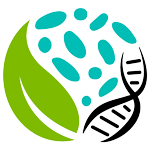Quantifying biofilm propagation on chemically modified surfaces
Michelle Halsted, Amber Bible, Jennifer L. Morrell-Falvey, Scott Retterer
December 2022 (In Progress), Phytobiomes Journal; https://doi.org/10.1016/j.bioflm.2022.100088
Abstract
Conditions affecting biofilm formation differ among bacterial species and this presents a challenge to studying biofilms in the lab. This work leverages functionalized silanes to control surface chemistry in the study of early biofilm propagation, quantified with a semi-automated image processing algorithm. These methods support the study of Pantoea sp. YR343, a gram-negative bacterium isolated from the poplar rhizosphere. We found that Pantoea sp. YR343 does not readily attach to hydrophilic surfaces but will form biofilms with a “honeycomb” morphology on hydrophobic surfaces. Our image processing algorithm described here quantified the evolution of the honeycomb morphology over time, and found the propagation to display a logarithmic behavior. This methodology was repeated with a flagella-deficient fliR mutant of Pantoea sp. YR343 which resulted in reduced surface attachment. Quantifiable differences between Pantoea WT and ΔfliR biofilm morphologies were captured by the image processing algorithm, further demonstrating the insight gained from these methods.
Citation
Halsted, M. C., Bible, A. N., Morrell-Falvey, J. L., & Retterer, S. T. (2022). Quantifying biofilm propagation on chemically modified surfaces. Biofilm, 4, 2022, 100088. In Progress. DOI:10.1016/j.bioflm.2022.100088.

